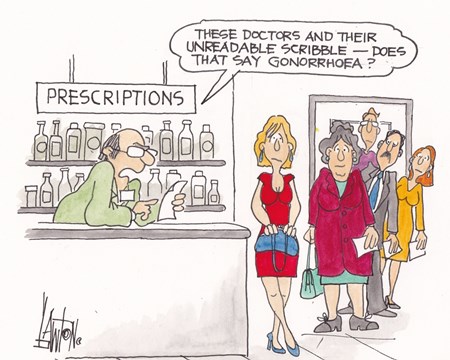Posted 18 April 2016
Gonorrhoea is the second-most
common bacterial Sexually Transmitted Infection, STI, in the UK after
chlamydia - and overall, there were almost 35,000 cases of gonorrhoea
reported in England alone last year.[1]
In 2011 the British Association for
Sexual Health and HIV, BASHH, gonorrhoea treatment guidelines were changed to
an intra-muscular injection of 500mg of ceftriaxone in combination with a 1g
oral dose of azithromycin as first-line therapy.[2] For those who find it
difficult to access a sexual health clinic, choose not to visit their GP or do
not want an injection we supply the alternative dual treatment of an oral dose
of 400g cefixime and 1g of azithromycin taken together as a single dose. We
also supply a free test of cure to make sure that the treatment has been
effective.
An outbreak of a resistant strain
of gonorrhoea began in Leeds six months ago and then spread to Scunthorpe,
Macclesfield and Oldham and has now more recently
been found in the West Midlands and the South-East of England.
Public
Health England, PHE, said on Sunday there had been 34 confirmed cases since
November 2014.[3] Since September 2015, 11 cases have been confirmed in the
West Midlands and in the South East of England, five of which were in London.
This
particular strain of gonorrhoea, known as HO41, is highly resistant to
azithromycin, the drug most commonly used in dual therapy to treat the
infection.[4] HO41 has so far proved resistant to current antibiotic treatment
and so it has been placed in the superbug category. Instances of this
particular strain were previously rare, according to the BASHH guidelines and
they added: "PHE is concerned that the effectiveness of current frontline dual
therapy for gonorrhoea will be threatened if this resistant strain continues to
spread unchecked."
There are no other effective drugs to tackle the resistant
strain, raising the prospect of it becoming untreatable if it builds further
resistance.
About 50% of women and 10% of men
are unaware that they’re infected as they don’t experience any obvious symptoms
and this means that the infection can go untreated until the disease has
progressed. This can lead to serious long term health problems and infertility.
PHE have
urged people to use condoms with new or casual partners to cut the risk of
catching the disease and anyone beginning a new relationship should get
tested along with their partner.
There is more information on our
website about the symptoms in both men and women and on testing and treatment.
Medically reviewed by: Super intendent pharmacist Margaret Hudson BSc(Hons)MRPharmS 18/04/16
References
[1] Public Health England. Sexual
and Reproductive Health Profiles [cited 2016 Apr 17]. Available from: http://fingertips.phe.org.uk/profile/sexualhealth/data#page/0
[2] BASHH. UK national guideline for
the management of gonorrhoea in adults [cited 2016 Apr 17]. Available from: http://www.bashh.org/documents/3920.pdf
[3] Public Health England. GOV.UK.
Safe sex reminder as antibiotic resistant gonorrhoea investigations continue;
2016 Apr 17 [cited 2016 Apr 17]. Available from: https://www.gov.uk/government/news/safe-sex-reminder-as-antibiotic-resistant-gonorrhoea-investigations-continue
[4] Science World Report. Science World Report.
Gonorrhea HO41 Superbug may be ‘worse than AIDS’; 2013 May 6 [cited 2016 Apr
17]. Available from: http://www.scienceworldreport.com/articles/6672/20130506/gonorrhea-ho41-superbug-worse-aids.htm
Medically reviewed by: Superintendent pharmacist Margaret Hudson BSc(Hons)MRPharmS 18/04/16
Posted in Sexual Health